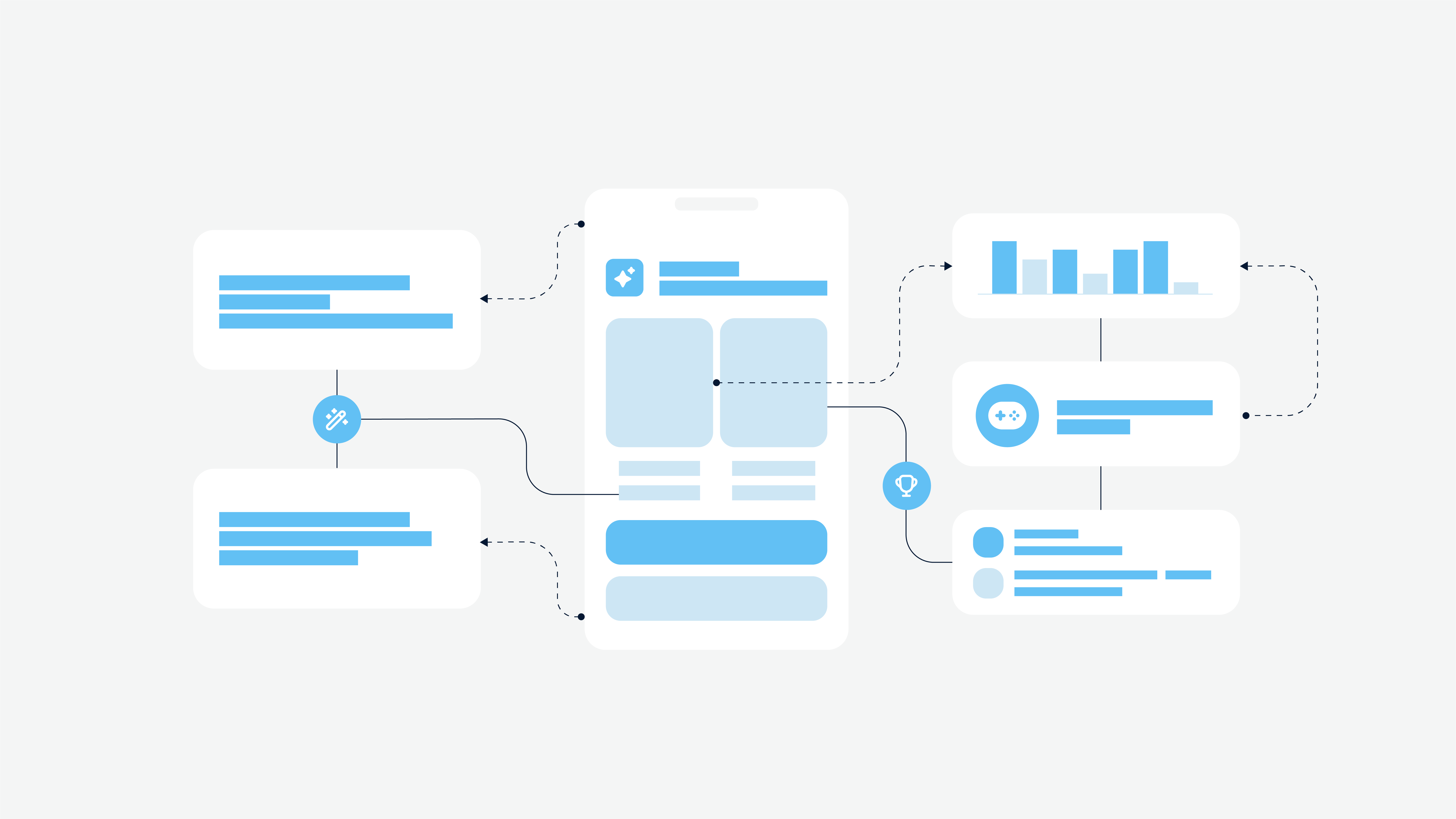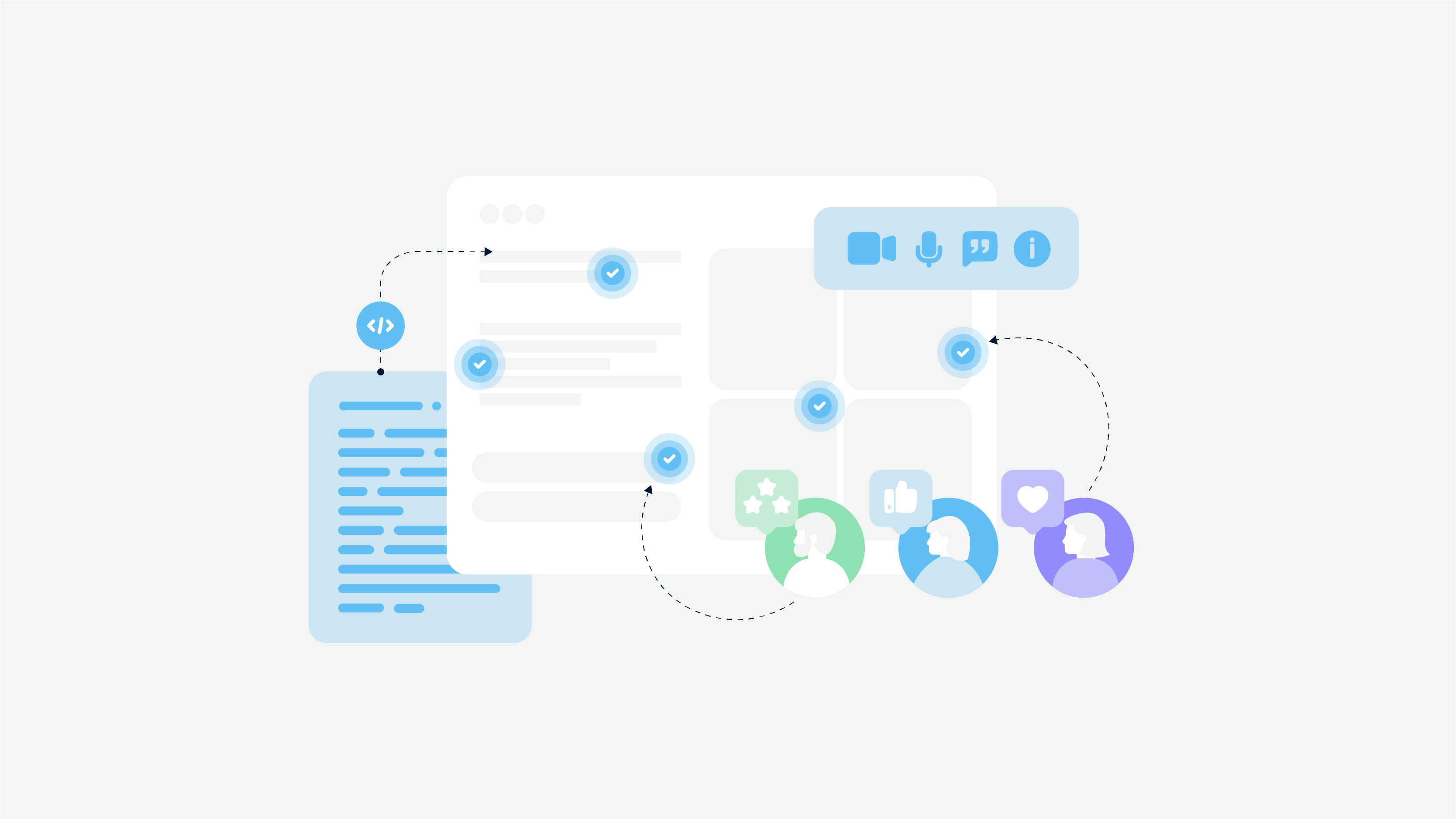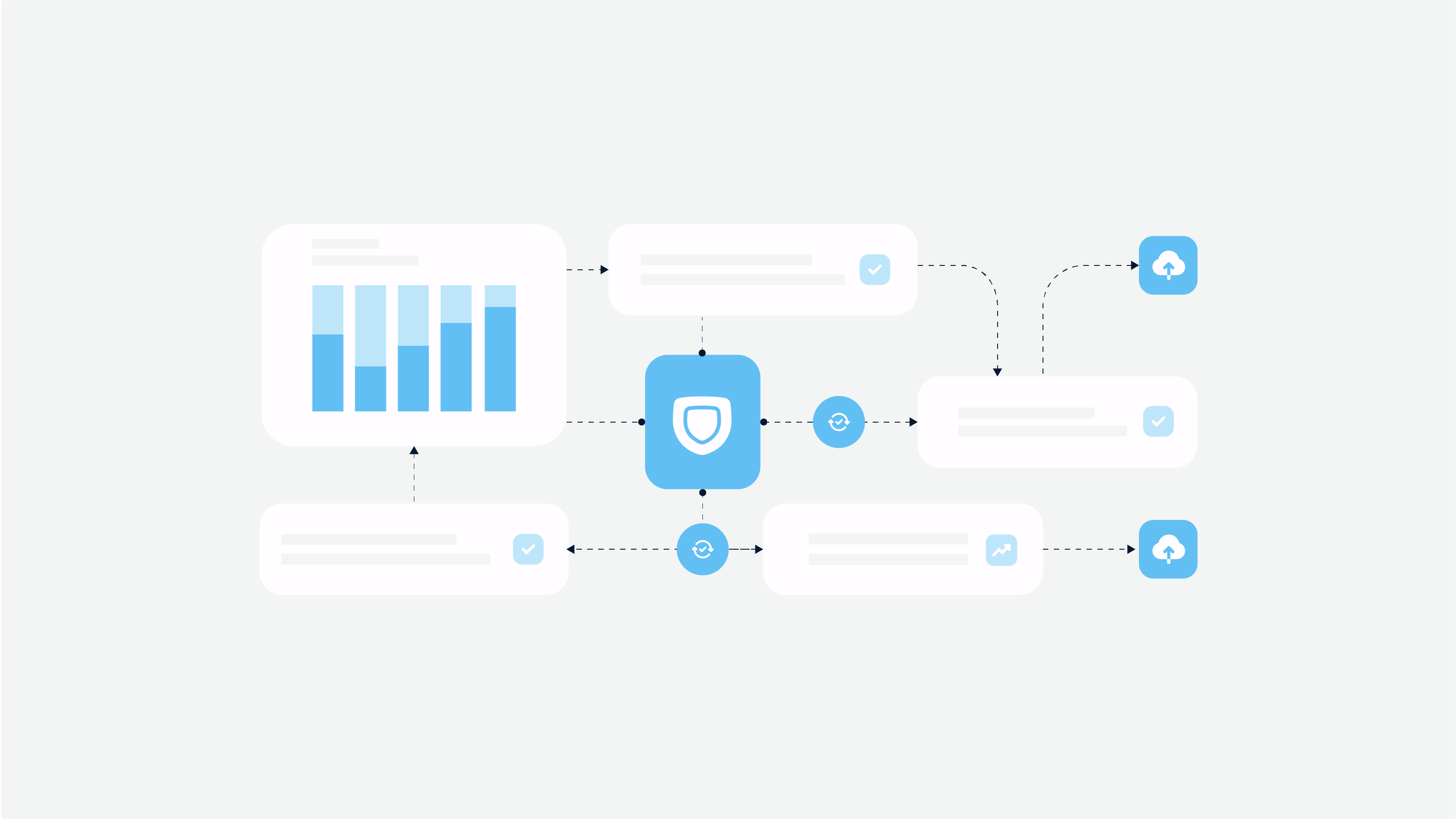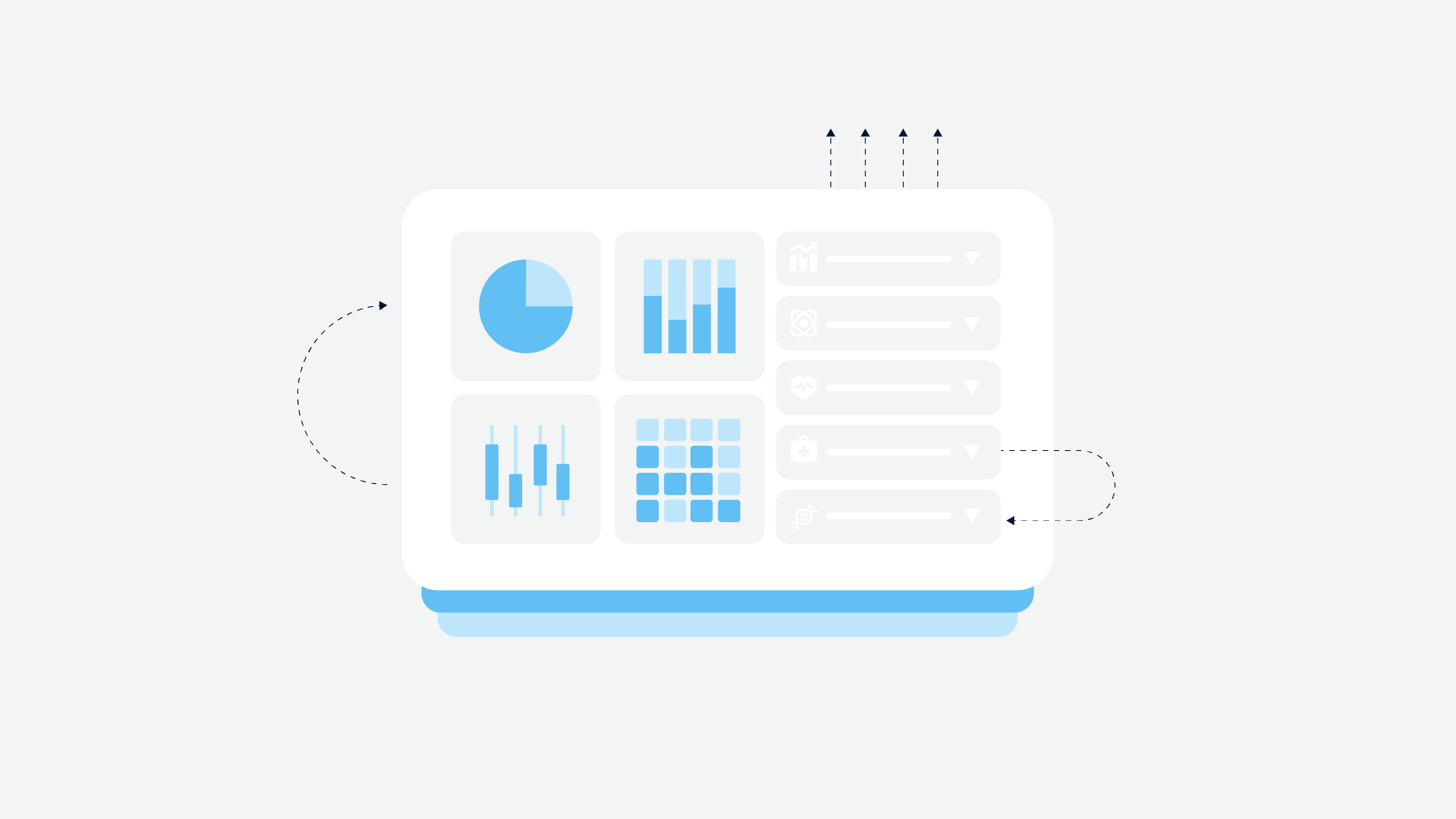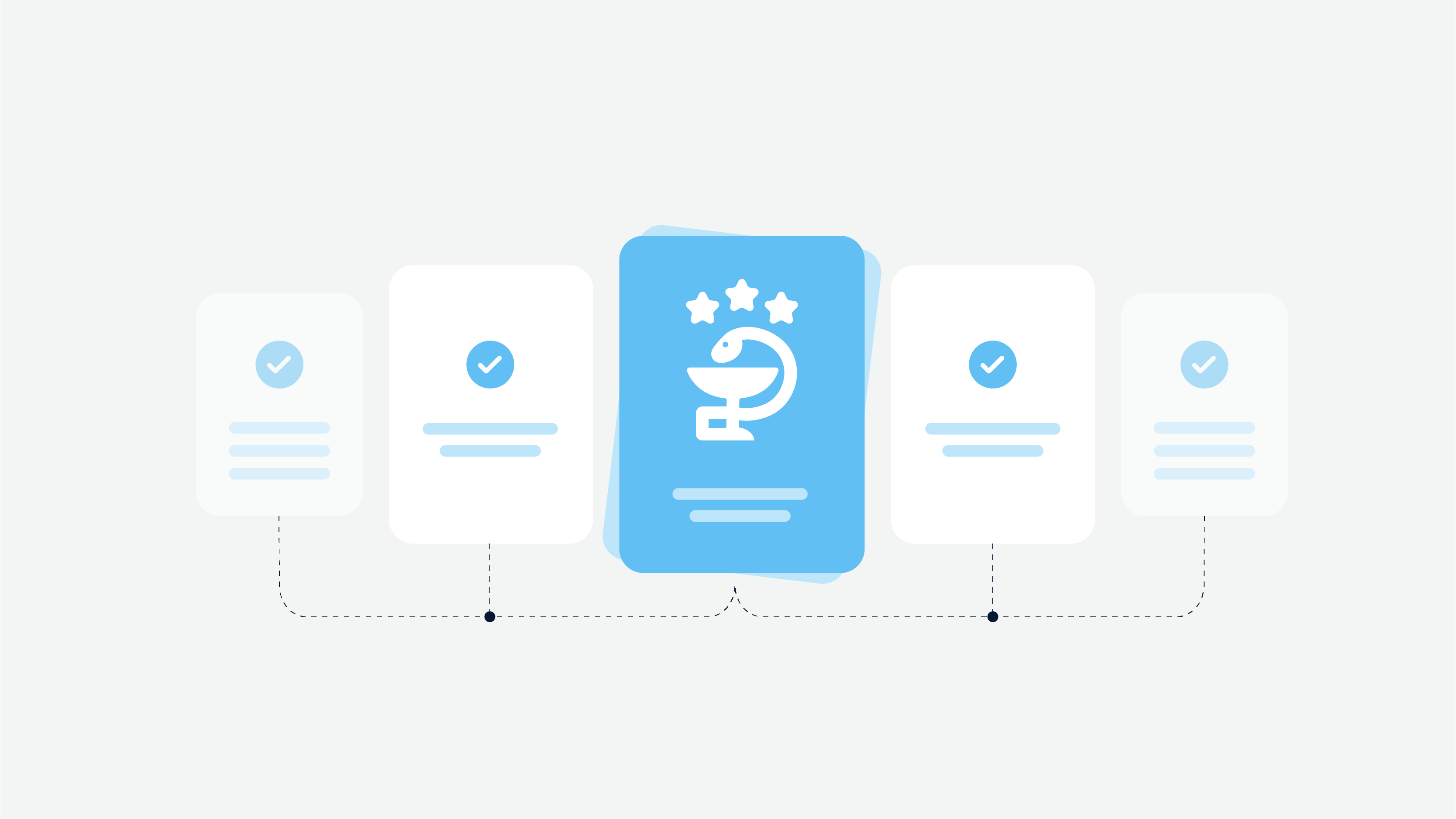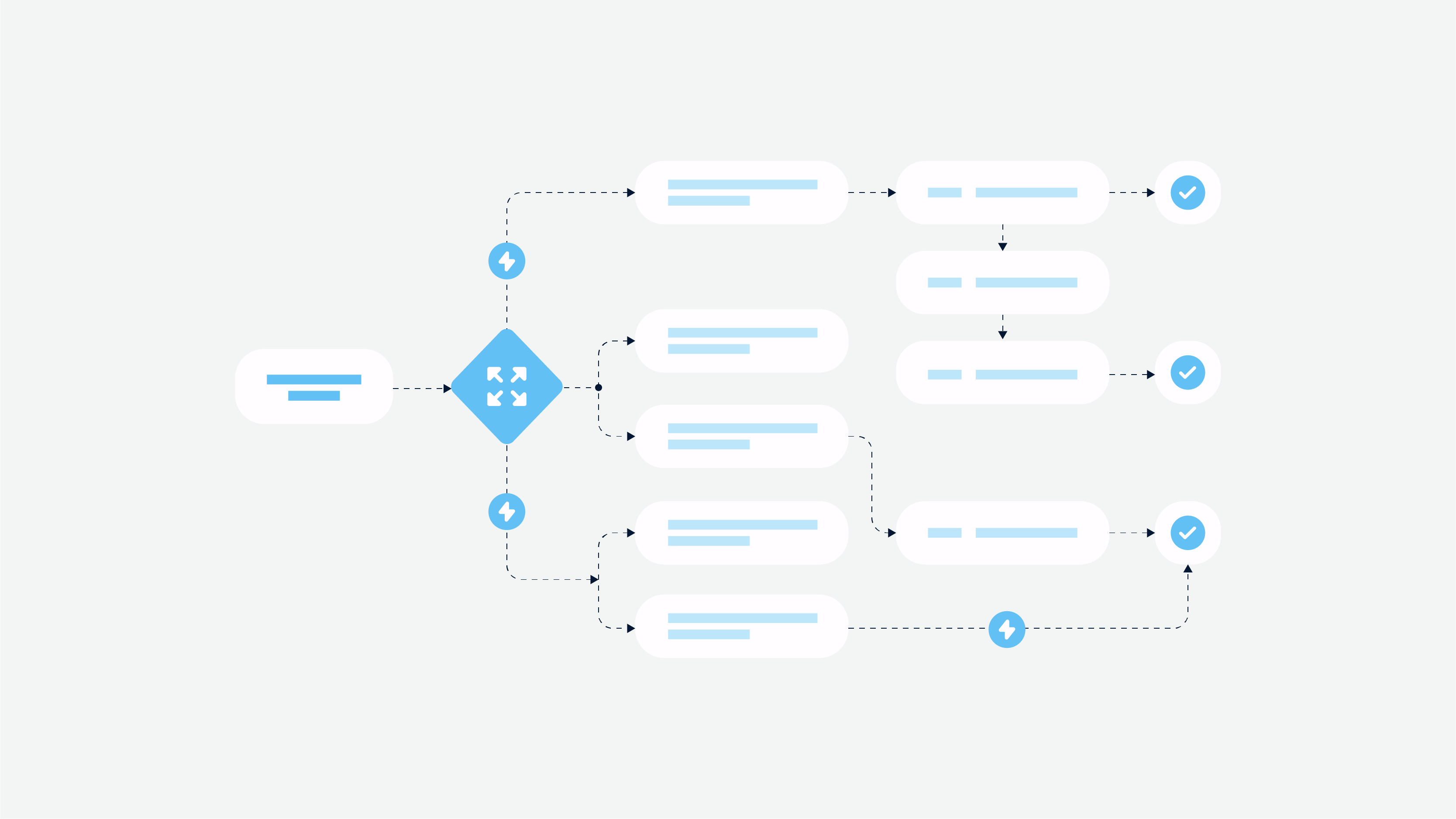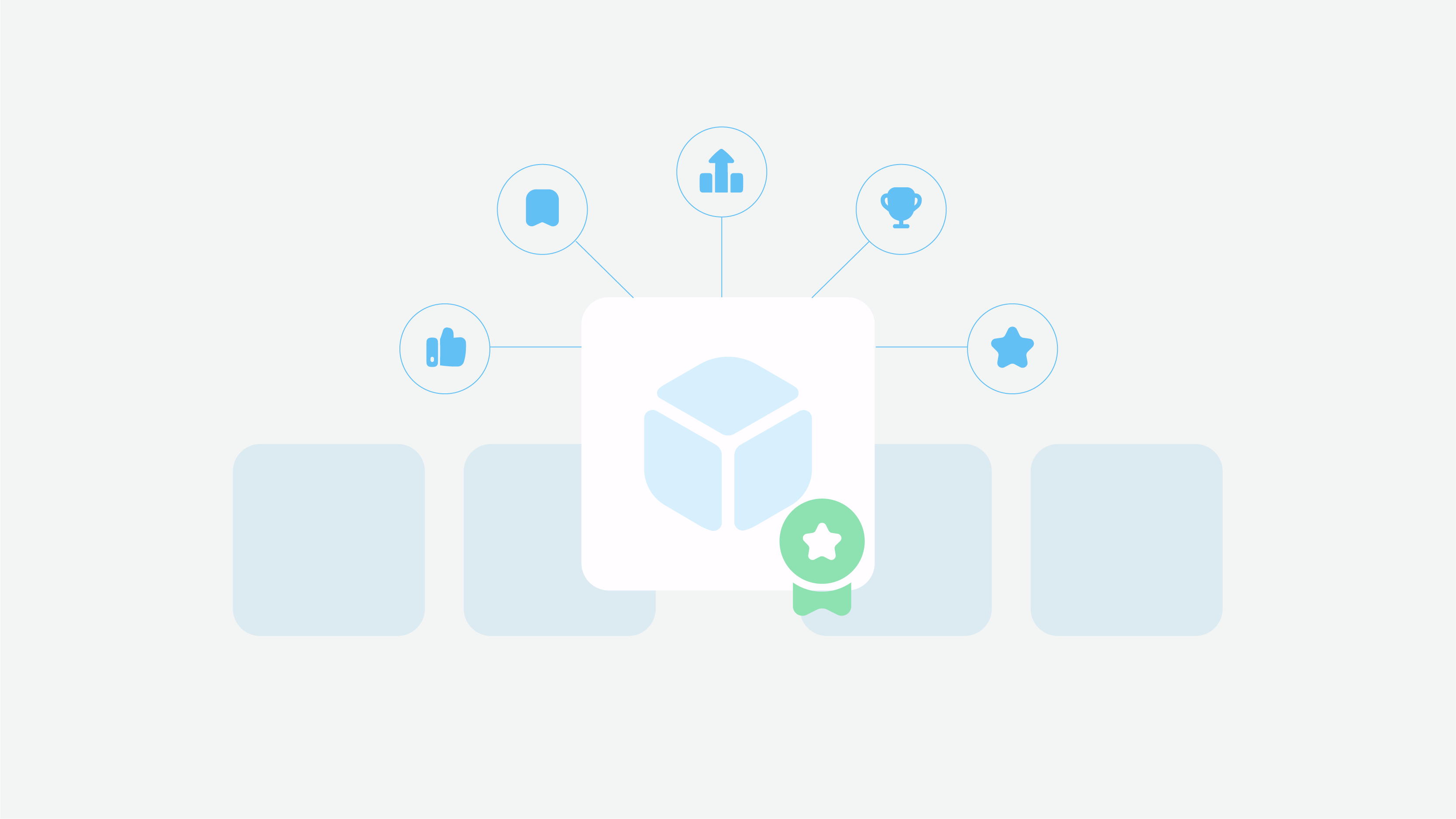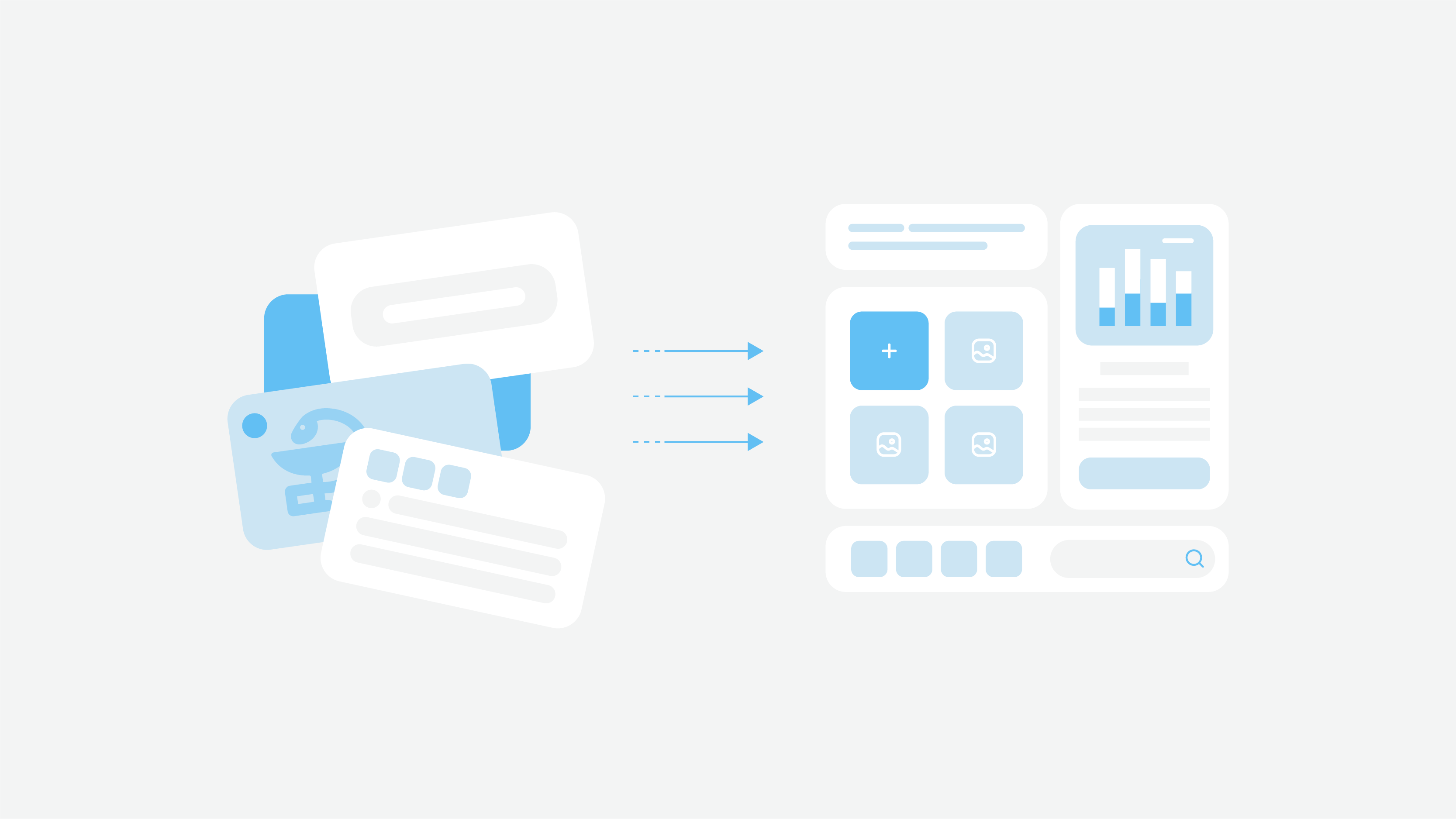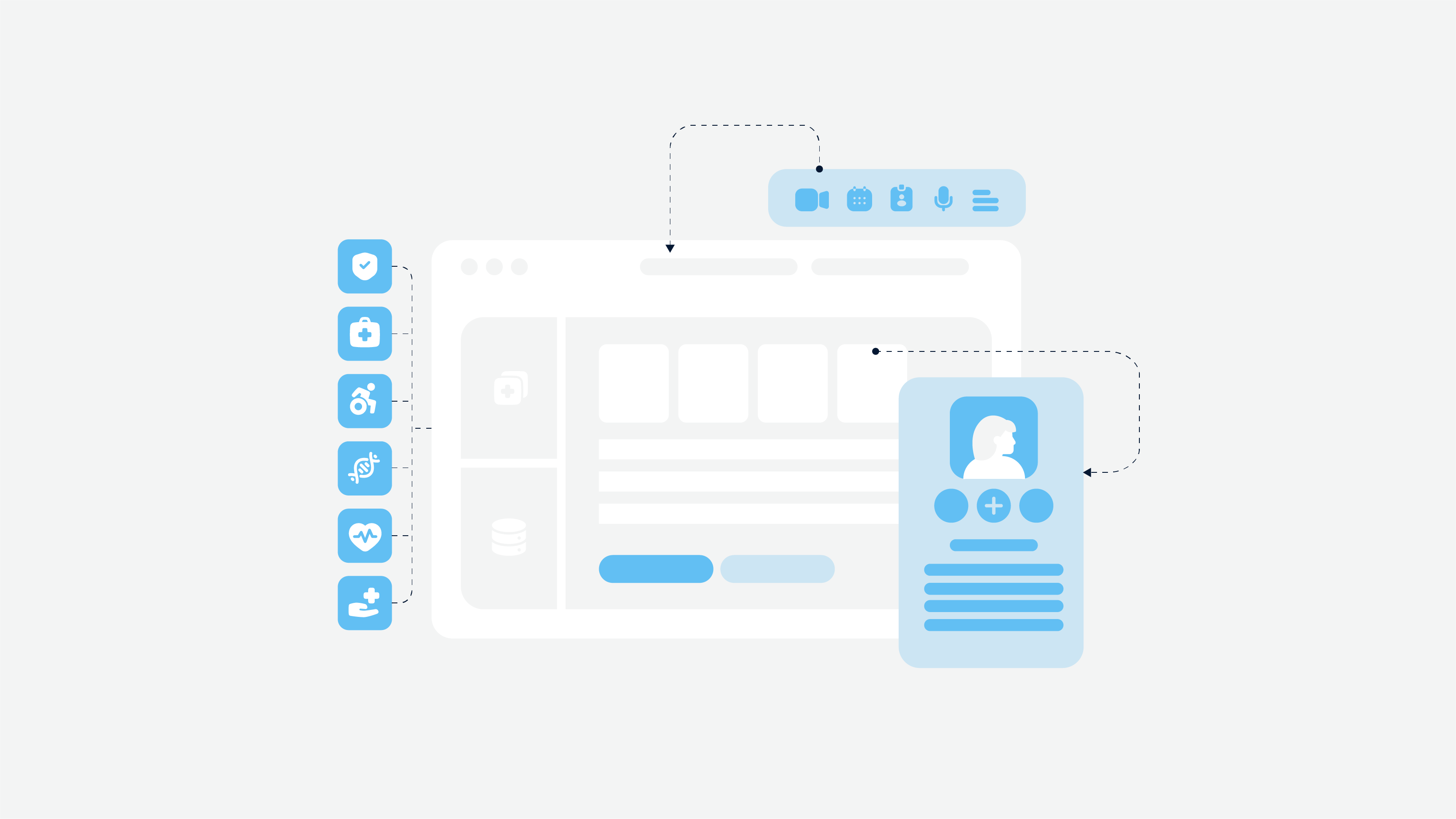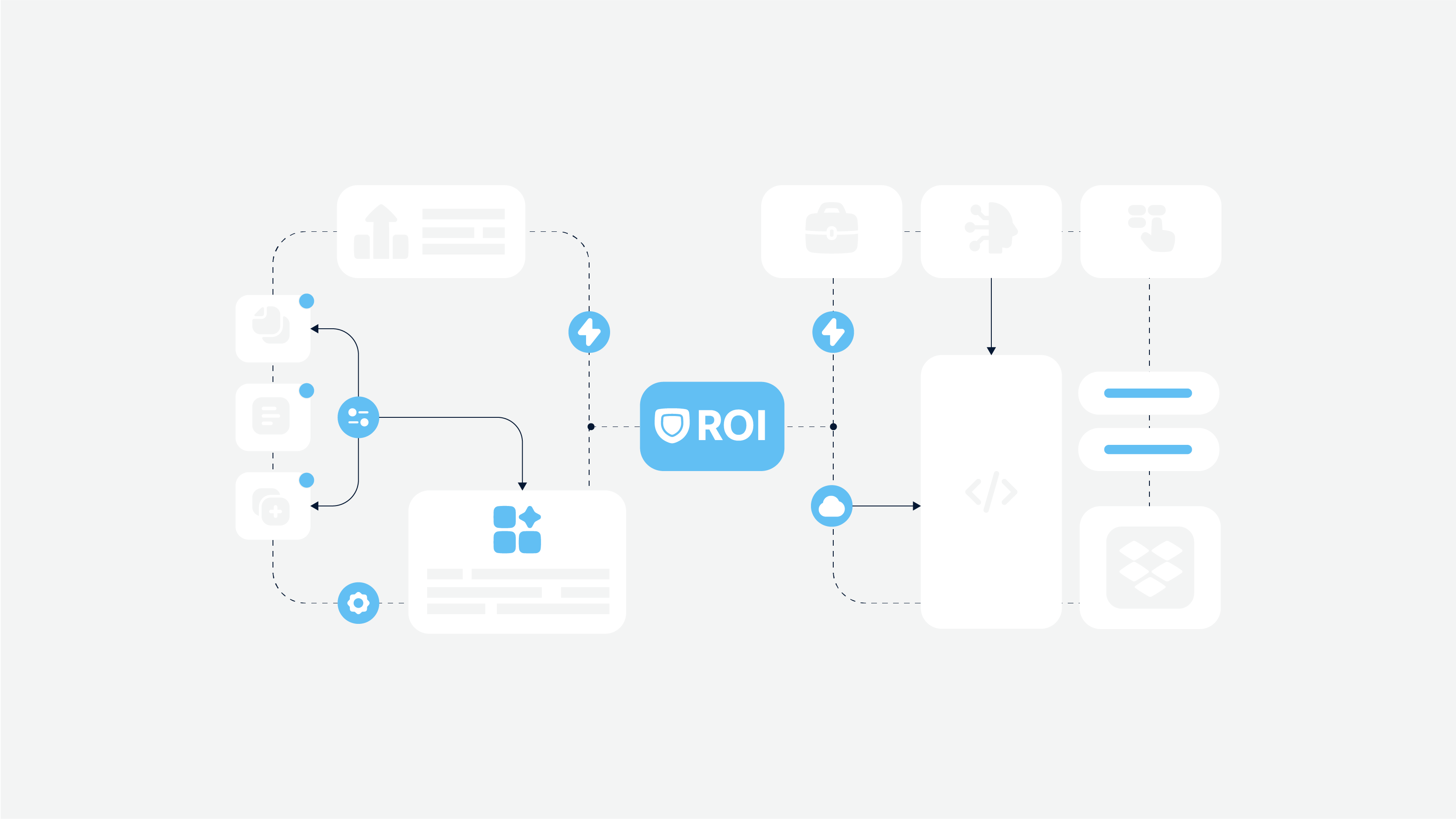In the app development world, engagement is the name of the game, and gamification is the secret sauce that keeps users hooked. Gamification in apps is a powerful strategy that taps into the psychology of motivation, making users feel invested, excited, and even a little competitive about coming back for more.
Whether you’re an app developer, UX/UI designer, product manager, or a digital health innovator, integrating these techniques can transform your app from a nice-to-have to a can’t-live-without.
Ready to level up your app’s engagement game? Let’s dive into 8 tried-and-tested gamification techniques that will keep your users coming back like bees to honey.
What is Gamification in Apps, and Why Does it Matter?
At its core, gamification in apps is all about taking the fun and addictiveness of games and sprinkling that magic onto applications. But it’s not just about slapping on some badges or adding a leaderboard. Done right, gamification becomes one of the most successful user engagement techniques, diving into deep-seated psychological needs –like a sense of achievement, curiosity, and social connection.

The gamification market is expected to leap from $15.43 billion in 2024 to $48.72 billion by 2029. The main driver behind amification in apps? Widespread smartphone adoption, which has made gamification strategies and user engagement techniques more accessible than ever. With people migrating from desktops to mobile devices, companies have a prime opportunity to reach and engage users through gamified apps.

Notably, 70% of the world’s top 2,000 companies now use gamification to make processes like employee training more interactive. This shift from traditional to digital methods is transforming user and employee engagement across sectors, with gamification poised to be an essential strategy in the coming years.
1. Epic Meaning & Calling: Giving Users a Mission
Expanding on epic meaning & calling as a strategy for gamification in apps means diving into how this taps into something that goes beyond points and rewards. It’s about giving users a sense of purpose, a reason to engage that feels profound, making the app experience more than just routine.
With this gamified user experience, users become heroes on a journey united by a higher purpose. It makes their efforts feel impactful.
Why this works so well
Humans are wired to seek meaning in what we do. When we feel that our actions contribute to a greater good, we’re more willing to invest our time, energy, and focus.
Such user engagement techniques meet a basic psychological need: the desire to make a positive difference. This approach creates a deep-rooted, emotional connection with the app. Users come back because they’re not just completing tasks; they’re part of a mission, maybe even a movement. It’s the difference between “I’m using this app” and “I’m making the world better through this app.”
Real-life examples

Donate a Photo
Developed by Johnson & Johnson, this app allows users to upload a photo each day in exchange for a $1 donation to a charity of their choice. Users are motivated to participate because they feel like they’re making a meaningful impact just by sharing a simple photo.

Charity Miles
Charity Miles takes a simple activity, like walking or running, and layers on a mission. For every mile logged, a donation goes to the charity of the user’s choice. By converting exercise into tangible support for good causes, the app transforms daily steps into meaningful contributions. The user isn’t just working out; they’re doing good with every mile.
2. Development & Accomplishment: Letting Users Level Up
Who doesn’t love the feeling of leveling up? Whether it’s in gamification in apps or real life, reaching that next level gives us a dopamine boost that keeps us pushing forward. This is the heart of development & accomplishment in gamification. It’s about making users feel like they’re progressing, not just ticking off tasks.
This strategy taps into our love for milestones because each achievement feels like a small victory that keeps us hooked. With every badge, every “congratulations” message, and every new level unlocked, users are reminded that their efforts are adding up. It’s not about the digital rewards themselves; it’s about the pride and motivation they bring.
Why this works so well
The sense of achievement we get from leveling up is universal. Humans love challenges that offer tangible rewards because they make progress feel real. When done well, such user engagement techniques work with users’ competitive spirit, giving them that “I did it!” feeling that makes them want to do it all over again.
In gamification, this concept also meets our intrinsic need for mastery. We want to be good at things, and when we can see how much we’re improving – be it in points, badges, or levels – it feels genuinely satisfying. A well-designed leveling system keeps users on a “virtuous cycle” of challenge, achievement, and motivation.
Real-life examples

Duolingo
Duolingo takes a mundane task (it is the language learning app) and makes it addictive by rewarding users with levels, badges, and “streaks.” Users can see their daily progress, track how many days in a row they’ve practiced, and earn badges for completing skill sets.
The gamified experience gives users that extra nudge to keep coming back, knowing they’re constantly improving. Not to mention perfect UI/UX design.

MyFitnessPal
This fitness app allows users to track their diet, workouts, and overall health goals. Progress is visibly marked through stats and milestones, such as logging a certain number of days in a row or achieving weight loss goals. These small, incremental achievements keep users coming back and striving to hit new milestones

Forest
Forest leverages user engagement techniques to encourage users to focus and stay off their phones. The app grows a virtual tree for each period of time users stay focused. The longer you stay off your phone, the more your tree grows. As users level up, they unlock new tree species, turning the act of focusing into a fun and rewarding experience. Plus, they can donate virtual trees to plant real trees
3. Empowerment of Creativity & Feedback: Let Users Be the Artist
Everyone’s got a creative side; even if we don’t all paint like Van Gogh or build like an architect, we still love to make things our own. Empowerment of creativity & feedback brings gamified user experience by using this human urge to create, personalize, and see our ideas come to life.
It’s about giving users the freedom to express themselves in the app, whether that’s designing, customizing, or sharing something uniquely theirs. And when that’s paired with real-time feedback, users feel both validated and motivated to keep going.
Why this works so well
People don’t just want to be passive participants; they want to shape their experience actively. When users have the freedom to put their own twist on things and get positive feedback, they feel more connected to the app.
In gamification in apps, such user engagement techniques fulfill a deep need for autonomy. Letting users make choices and encouraging them to experiment creates a sense of ownership over their experience. When you add in instant feedback, whether it’s a like, a comment, or a virtual “thumbs up”, users know their creativity isn’t just going into the void. It’s acknowledged and valued.
Real-life examples
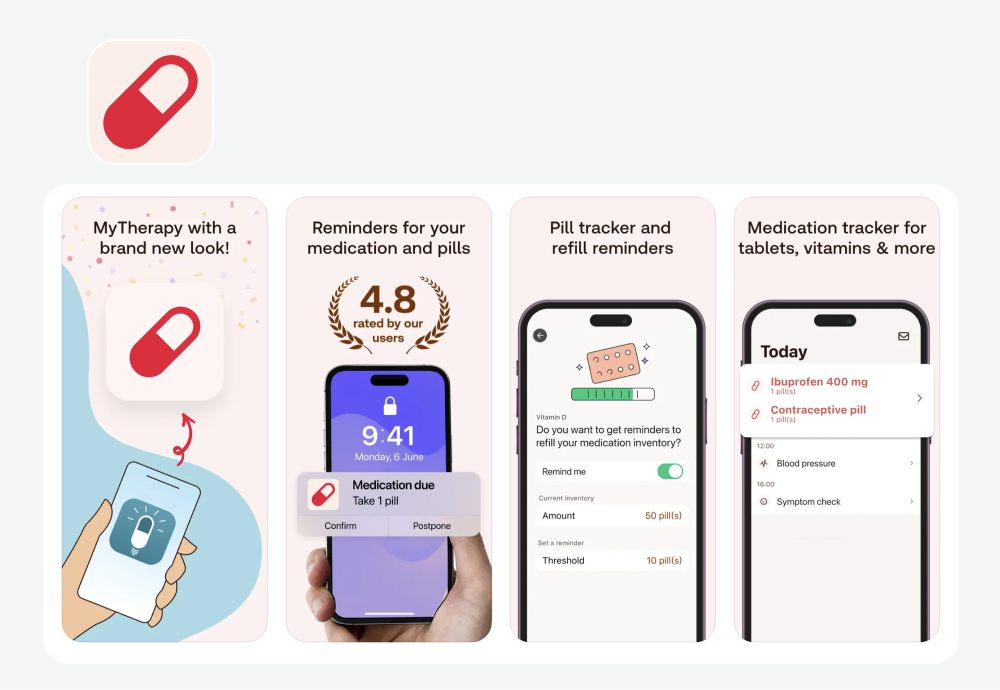
MyTherapy or Symple
These applications allow users to track their symptoms, moods, or health progress in a creative, personalized way. Users can input data through photos, videos, or voice recordings and receive feedback in the form of insights or visual progress. This empowerment of personal health monitoring helps users feel more in control of their journey while offering positive reinforcement through regular updates or reminders.
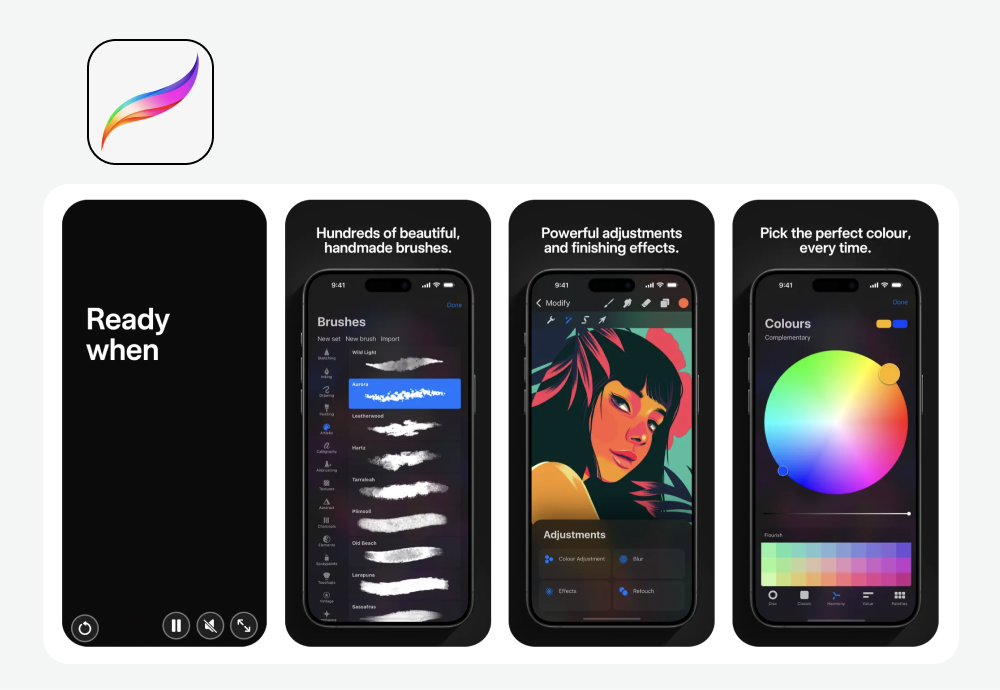
Procreate
A popular drawing app for iPad, Procreate provides users with all the tools needed to create professional art. Artists get immediate feedback as they draw and paint, with the option to undo, redo, and refine their work. Procreate also offers tutorials and a vibrant community where users can share their art and receive feedback, thus keeping them motivated to explore new techniques and improve their skills.
Book a free app engagement consultation with our experts
4. Ownership & Possession: Giving Users a Stake
When users feel like they own something within an app, they’re much more invested in sticking around. Ownership & possession taps into our natural urge to protect, grow, and take pride in things we call “ours,” whether that’s a digital pet, a carefully curated profile, or an investment portfolio.
Why this works so well
Ownership as a part of gamification in apps adds that extra “hook” because people tend to value things they’ve put time, effort, or money into. When users feel like they own a piece of an app, it creates an emotional connection, and they’re far more likely to keep coming back. Ownership is empowering – it gives users a sense of control and responsibility, both of which are deeply engaging.
Whether it’s a customized avatar that feels like their digital twin or a profile that holds memories, progress, and achievements, users become invested in protecting and improving what they “own.” Think of it like a garden they’ve planted and nurtured; once it’s theirs, they want to see it flourish.
Real-life examples
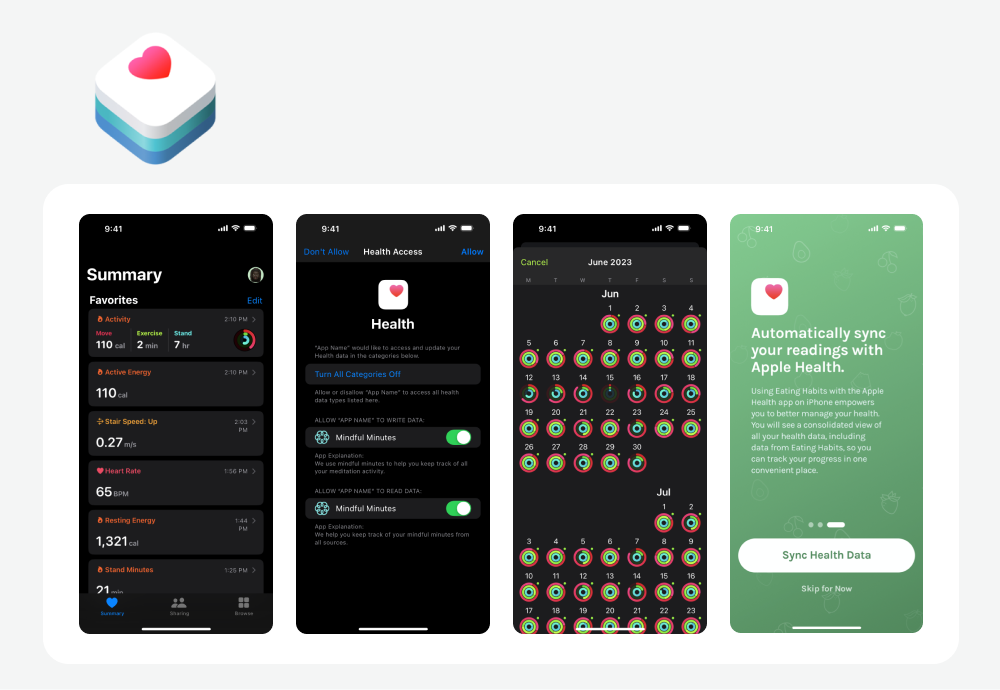
Apple HealthKit
This mobile application provides a sense of ownership over one’s health data, giving users the feeling that they are in control of their well-being. Apps that track fitness or health goals often tie into this sense of purpose, making users feel they are contributing to their long-term health journey

Fitness and Healthbit or MyFitnessPal
Apps like Fitbit allow users to set personal fitness goals, track progress, and earn badges or achievements based on their physical activity. This personal ownership of health data motivates users to stay on track, and many are motivated by the sense of accomplishment and control it gives them over their well-being .
Check out our gamification for Patient Health Portal Development
5. Social Influence & Relatedness: Making it a Group Effort
People are naturally drawn to others. And this is a great opportunity for creating a gamified user experience. Whether it’s for validation, camaraderie, or even some friendly rivalry. Social influence & relatedness work with our need to connect, compete, and collaborate, making everything from fitness to learning more fun when friends (or foes!) are involved.
This type of gamification in apps creates engagement by making users feel like they’re part of a group, not just alone with an app. After all, who doesn’t get a little boost when someone else is cheering them on (or trying to outdo them)?
Why this works so well
These user engagement techniques let users compete or share their achievements, leveraging the natural need for collaboration and motivating users to engage and return. Social dynamics create a ripple effect: people are more likely to return to an app if they know friends, family, or colleagues are there, too. It’s the reason people love group fitness classes or social media: it’s more fun when someone’s there to share in the highs and the lows.
Real-life examples
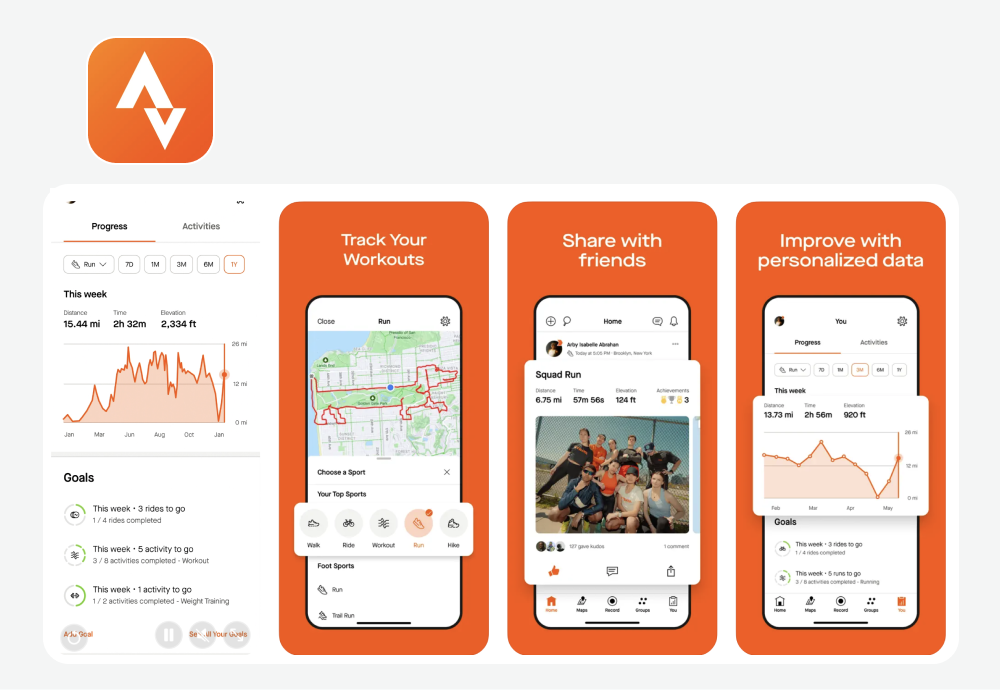
Strava
Strava has cracked the code on making solitary activities like running or cycling feel social. By letting users post their routes, times, and accomplishments, Strava turns fitness into a social experience. Users can “give kudos,” join challenges, and even engage in friendly rivalries with friends or local runners. This social dynamic is powerful: when people know others are watching, they push a little harder.
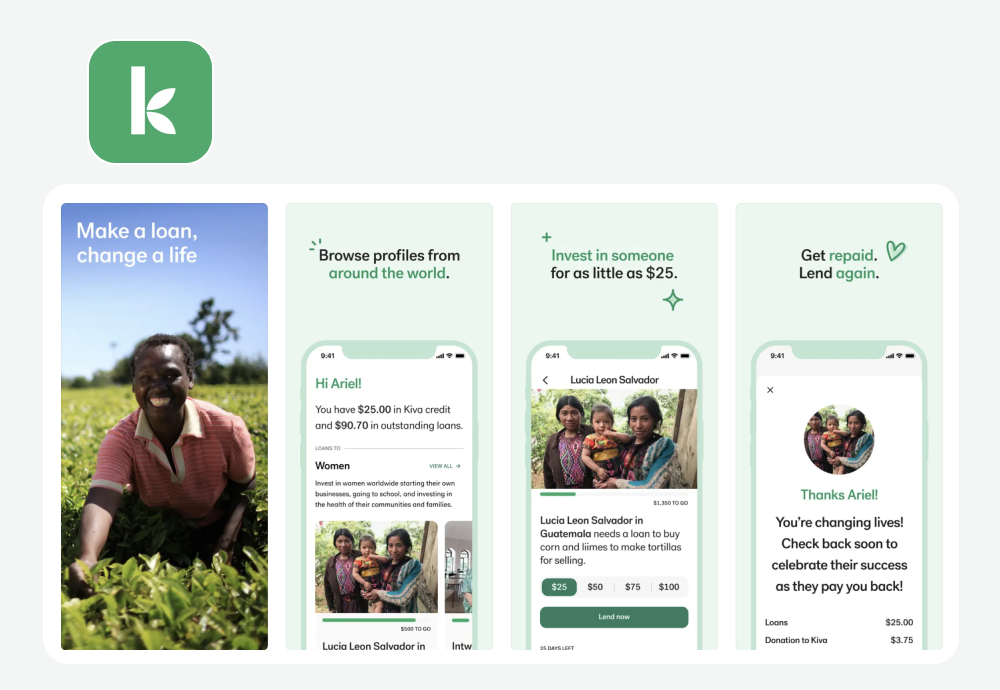
Kiva
Kiva, a nonprofit app, allows users to make micro-loans to entrepreneurs around the world. It fosters social influence by showing how many people have supported a given entrepreneur or project, and the success stories of previous loans inspire others to contribute. It creates a feeling of being part of a global community working together to help others, making users feel like their actions are meaningful in a bigger context.
6. Scarcity & Impatience: Creating a Sense of Urgency
Ever notice how your interest spikes when something is “almost gone” or only available for a short time? That’s scarcity and impatience at work, tapping into our FOMO (fear of missing out) to drive action and strengthen app gamification strategies.
When we think we might lose out, we’re wired to act fast, whether it’s snagging a deal or booking the last available slot. Scarcity fuels this sense of urgency and makes things feel more valuable simply because they’re harder to get. This is essential for gamification apps.
Why this works so well
This technique of gamification in apps plays on our natural instinct to value what’s in limited supply, creating a sense of urgency that prompts us to act quickly. The feeling of “if I don’t get it now, I’ll lose it” is a powerful motivator that pushes users to engage (especially when they use the productivity app). This technique creates a moment where users don’t want to wait and risk missing out – meaning they’re more likely to complete the action.
Real-life examples
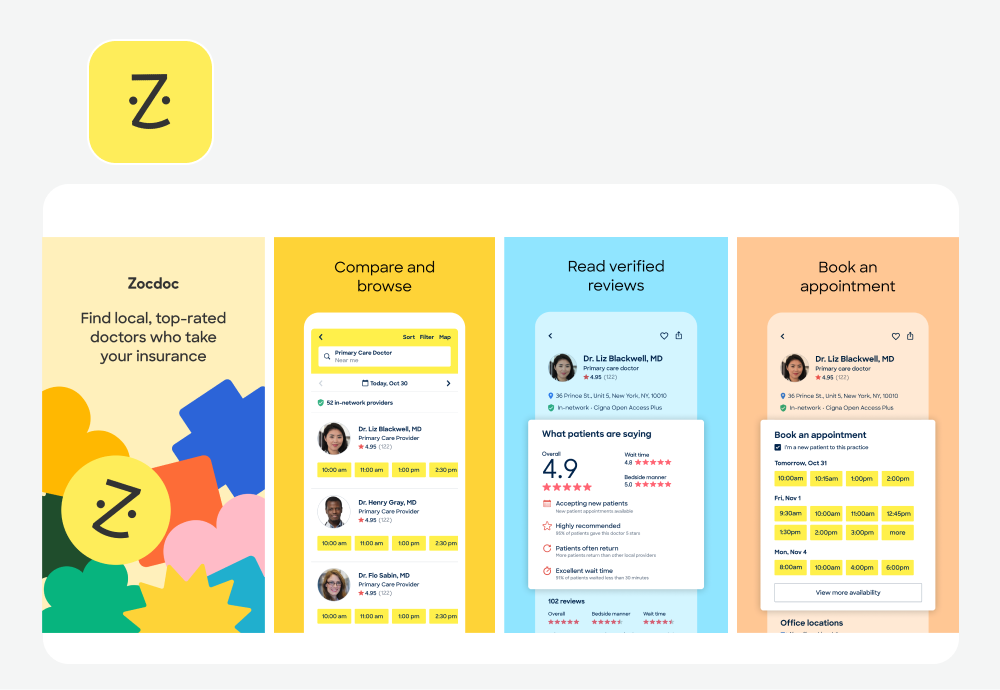
Zocdoc
This healthcare app uses scarcity and gamified user experience by displaying limited available slots for doctor appointments. Users are often notified when a spot is nearly full or if there’s only one slot left for an upcoming day. This mobile app gamification nudges users to book appointments immediately rather than procrastinating, as they know the window of opportunity is closing.
Amazon Lightning Deals
These deals are a perfect example of scarcity in action. Limited-time discounts show up on the app for only a few hours or until supplies last. This taps into the FOMO (fear of missing out) mentality, prompting users to act quickly and make purchases. The countdown timer creates a sense of urgency, making it hard to resist checking out the deal before it disappears.
7. Unpredictability & Curiosity: Keeping Users Guessing
We all love a good surprise, and when it comes to keeping users engaged and creating App gamification strategies, a dash of unpredictability goes a long way. This gamification technique fuels our innate curiosity, drawing us back to apps again and again because, well, we don’t know what we’ll find.
It’s like turning an app into a treasure hunt, where every time you log in, you might discover something exciting or unexpected. It’s the same psychological pull that makes slot machines and mystery boxes so enticing: the thrill of what might happen next.
Why this works so well
Humans are naturally curious, and when we don’t know what’s coming next, our brains stay alert and intrigued. This “variable reward” system gives users an extra reason to come back, and it keeps them emotionally invested because each interaction holds the potential for a pleasant surprise. This approach can create a sense of adventure, even in routine tasks.
Real-life examples
Snapchat Streaks
Snapchat uses unpredictability in the form of streaks, where users try to keep up daily interactions with friends to maintain a streak. The streaks themselves aren’t predictable. Users don’t know if the other person will keep their streak alive or if someone might drop out. This uncertainty adds an element of excitement, and the longer the streak, the more people feel compelled to maintain it.
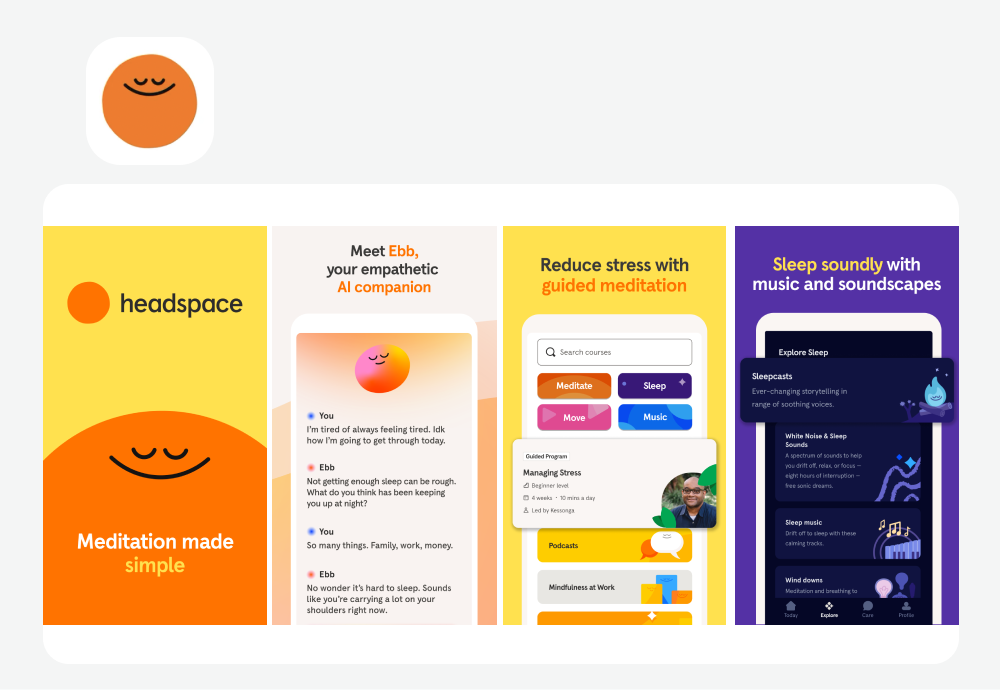
Headspace Meditation Challenges
Headspace, a meditation and mindfulness app, creates a sense of curiosity by introducing random challenges, like unexpected meditation streaks or themed challenges. Users are motivated to check back in to see what new challenge awaits them, which keeps the app from feeling too predictable or stale.
8. Avoidance & Loss: Keeping Users from Losing Out
When it comes to keeping users hooked, nothing gets the job done quite like the fear of losing what they’ve earned. It’s not about gaining more but about holding on to what they’ve got. And who can blame them?
The thought of losing progress, perks, or streaks stings more than a bad Wi-Fi connection on a Zoom call. This gamified user experience makes your clients feel like they’ve invested too much to let it slip away, so they keep coming back to protect what they’ve earned.
Why this works so well
Humans are wired to hate losing things – loss aversion, as the experts call it. If we stand to lose something we’ve worked for, we’ll fight tooth and nail to avoid it. Apps tap into this natural instinct by making sure that the longer users engage, the more they risk losing if they don’t keep up.
Suddenly, in such app gamification strategies, a habit becomes less about what you gain and more about what you stand to lose. You don’t just want to win; you don’t want to see your hard work disappear.
Real-life examples
Duolingo’s "hearts" system
Duolingo previously used a “hearts” system where users had a limited number of hearts for mistakes or missed lessons. If they ran out of hearts, they had to wait or purchase more to continue their lessons. The possibility of losing hearts, and consequently the ability to progress, kept users engaged and prevented them from abandoning their learning.
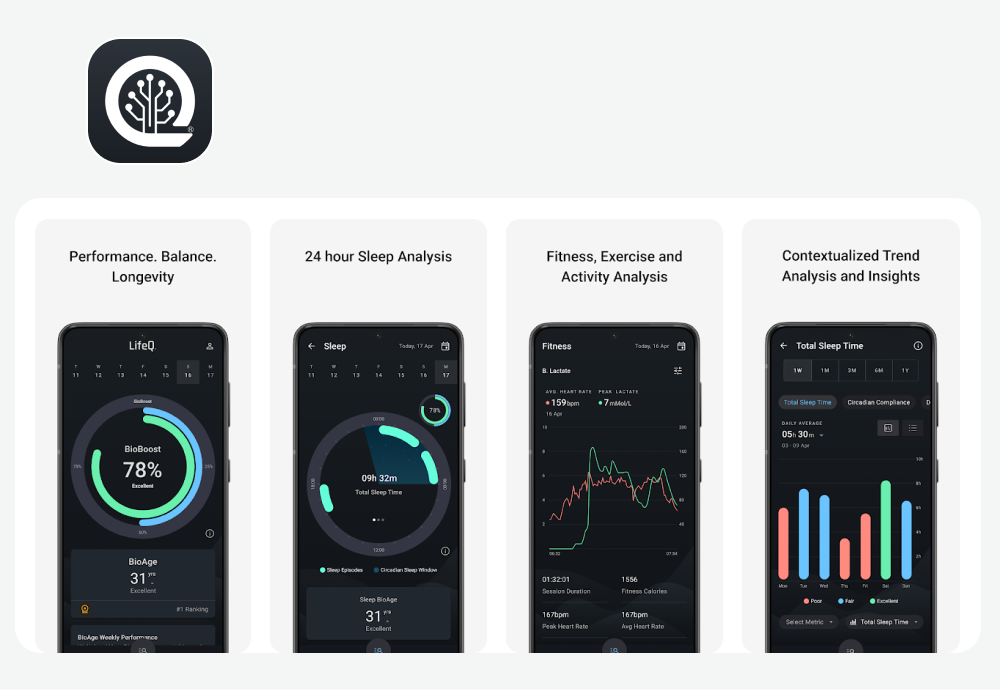
LifeQ
LifeQ is all about keeping an eye on your key health stats – things like sleep, heart rate, and activity. One feature in the app shows you a “health score” that can drop if you skip tracking or fall behind on your routines. This fear of watching your score drop is a big motivator to stay on top of your health habits. No one wants to see that number slip, so users tend to stay more consistent with logging their stats, making sure they don’t lose progress.
How to Implement Gamification in Healthcare and Insurance Apps
Gamifying apps in healthcare and insurance can turn those everyday, sometimes tedious tasks, like tracking your health or taking your meds, into engaging activities that feel more like leveling up in a game than doing routine chores. Let’s look at some of the best ways to bring gamification to life in these areas.
Start with app gamification strategies
For healthcare apps
Gamification can help make health goals a little more fun. Think about tracking your steps or taking meds as if you’re completing mini-missions each day. Imagine users earning points or badges for hitting step goals, logging vitals, or sticking to a routine—each step becoming a small win in the bigger journey toward health. Rewarding people for daily check-ins could help build strong habits over time, ultimately turning “health management” into “health achievement.”
For insurance apps
Here, gamification encourages preventive health actions that can benefit everyone. Think of it like rewarding good behavior – people could earn discounts on premiums or other perks by sticking to healthy habits, like reaching workout goals or logging meals. Insurers benefit from lower risk, and users get a reason to stick with the app, plus some financial perks.
Best Practices for Gamification Success
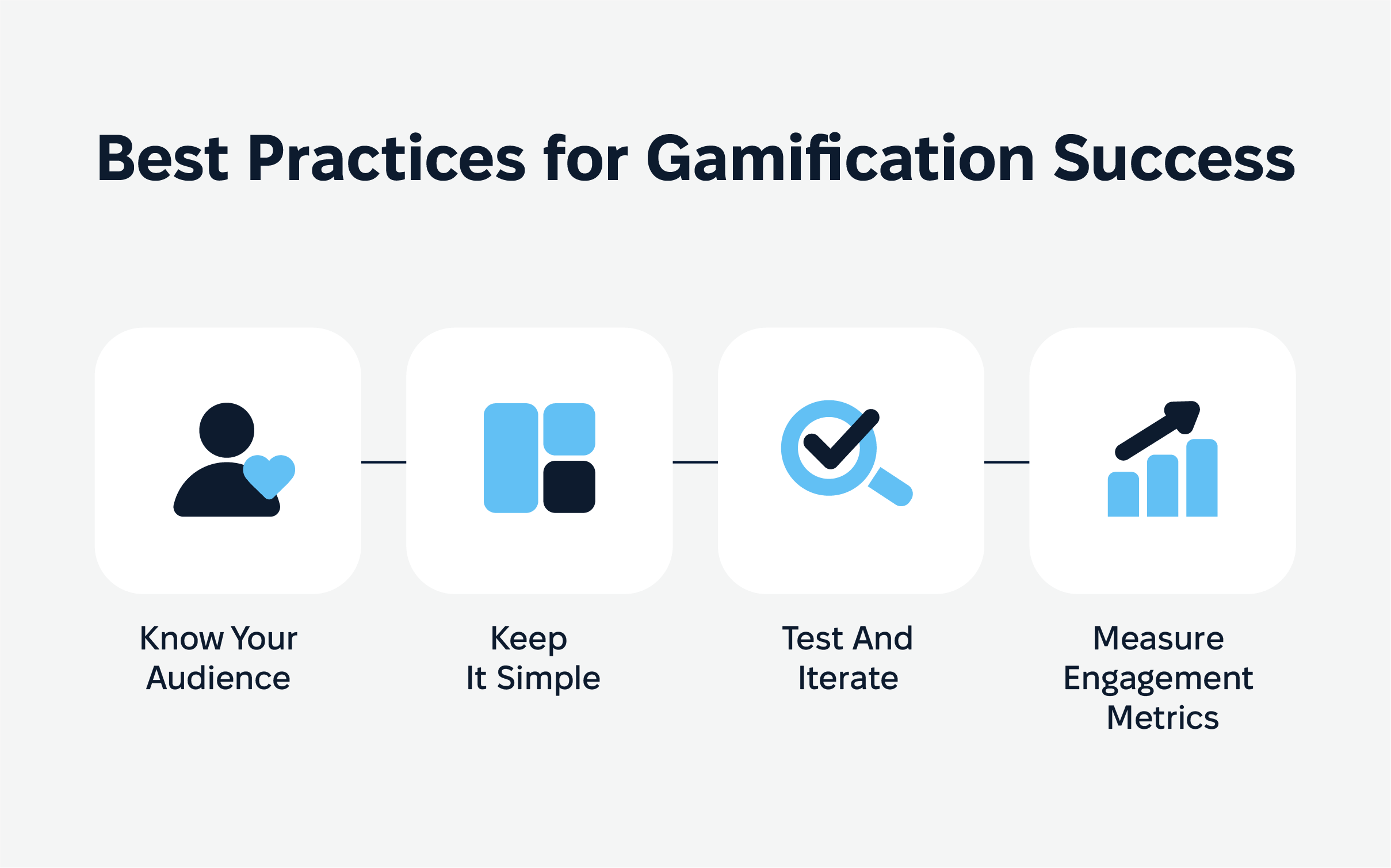
- Know your audience: Different people have different motivations. Find things that motivate users and design features around them. Some users may love competition, while others might prefer achieving personal bests or hitting milestones.
- Keep it simple: Gamification should be the seasoning, not the whole dish. Keep it focused and easy to use. If your app feels like a maze of features, people might lose interest fast. Also, do not overuse in-app purchases.
- Test and iterate: Your app gamification strategy isn’t a “set it and forget it” type of thing. Collect feedback, pay attention to what features users love (or skip), and refine as you go. Maybe they’re into step challenges, or maybe it’s the surprise rewards. Fine-tune based on the data.
- Measure engagement metrics: Keep an eye on important metrics, like how often people come back, how much time they spend on the app, and how consistently they hit their goals. These numbers will tell you if your gamification is clicking with users and whether it can increase user engagement.
Wrapping It Up
App gamification strategies are here to stay. With healthcare and insurance mobile apps jumping on board, gamification has evolved beyond a trend; it’s a big part of real user engagement techniques to make meaningful, positive changes in people’s lives.
So whether you’re creating the next go-to fitness gamified app or making an insurance application people actually want to use, gamification can encourage mobile app engagement, build a lasting connection with users, and keep them coming back for more.
Ready to add some gamification features to your app? Whether you’re working on a complex healthcare application or a unique branded gaming app, we can bring our expertise to the table. We at Cadabra Studio are ready to join your trip and guide you through this journey. Just contact us for more info.

